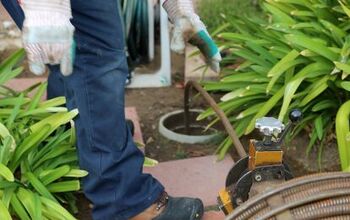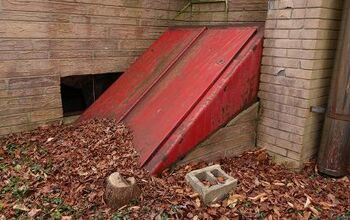How Much Does Insulation Removal Cost? (Find Out Now!)

Being able to properly heat and cool your home is of the utmost importance. Not only does it help get a longer life out of your HVAC system, but it can also lower your energy bills substantially. It is necessary to remove and replace your insulation when it is ineffective or outdated.
The average insulation removal cost is $305, and you will spend $1.50 per square foot to remove the material. Labor costs an average of $200 and it takes 5 hours to remove insulation. You may have to spend another $75 per hour if there is electrical damage and you need to hire an electrician.
Insulation removal is the last thing most homeowners want to deal with, but it is often necessary. Follow along as we explore how much you should expect to pay for insulation removal and replacement.
Do You Need Handyman Services?
Get free, zero-commitment quotes from pro contractors near you.

What is the Average Cost to Remove Insulation?
There are a ton of variables in mind, so do not treat this as a solid answer. That said, you can estimate conservatively that it will cost $1 to $2 per square foot to remove your old and outdated insulation. The best way to find out what your removal will cost is to call around for quotes.
The average attic is somewhere in the 70 square foot range, meaning your removal on average will be $70-$140 without labor factored in. That said, there are four different things that impact pricing. Labor, materials, and tools used, and the square footage of the attic.
When additional materials and labor are required to get the job done, you are facing additional costs. Another important thing to consider is that the company you hire will likely also do the job of installing the new insulation. The average cost will run from $200 to $500 on average, depending on the professional and the complexity of the removal.
How Does the Removal Process Work?
To get a proper cost estimate, you should know what the insulation process looks like. Contrary to popular belief, it is not as simple as getting into the attic and ripping up insulation. Each home presents a unique set of circumstances.
Generally speaking, there are three steps to the process: preparation, removal, and replacement. The last part may not necessarily be true if you plan to do the install yourself or go with another company. In the case of the latter, having a single contractor do the removal and install in one shot makes far more sense.
Preparation
Don’t just assume that this process is simply about ripping up the old insulation and throwing it away. The preparation is perhaps the most important key for not only successfully removing the old insulation but installing a long-lasting replacement.
The cost of your removal can largely depend on how much prep work needs to be done. Most contractors run anywhere from $25 to $50 per hour depending on your area. Even at the low end, the average removal takes about 6 hours. Difficult preparations can add to that total.
Removal
Now it’s time for the actual removal. Costs are also dictated by the type of insulation. There is foam, batt, and fiberglass batt to consider. Each type of insulation dictates certain tools to get the job done and one form can take longer to remove than another.
For blown-in insulation, you would need a vacuum that could carry the metal out of the attic in a safer manner. Batt insulation, meanwhile, will get rolled up by hand and removed that way. The costs of removal come down to how much old insulation there is, the level of contamination, and how much labor is needed.
The average removal takes somewhere around 6 hours to perform. Even at the low end of the labor scale, that is roughly $175 to perform the removal. The further you get towards big metro areas the costs can spike up substantially.
Replacement
When the contractors are done removing the old insulation, they will often times perform the new installation. They may quote you a cost of removal and then a separate cost for the installation of the new insulation.
Again, that comes down to the type of insulation, how much is required, any potential decontamination measures, cleaning up of debris, etc. The R-value of the materials used will also dictate the costs of replacement. An experienced contractor should be able to provide quotes based on the type of insulation and expected labor time.
What Can Prolong Removal?
In an ideal situation, the contractors would come in, remove the old insulation, and put the new insulation in. But there are factors that may prolong the removal process, increasing your costs along the way.
The two most common issues revolve around water damage and any potential pest infestation. Neither of these is welcome news and can increase the costs due to extra labor and tools required to safely remove the insulation.
Pest Infestations
Some older insulation can be a magnet for pest infestation. Not only that, but there are a ton of different potential critters that can get in your insulation. Unfortunately, most of the time it is a rodent making its home there.
Rodents are attracted to the fiber-based thermal barriers. They use your insulation by shredding it, nesting in it, and even using it as a toilet. When animal urine and droppings come into play, it becomes a matter of health and safety. Extra precautions are taken to not only remove the insulation safely, but to deter the rodents and ensure that the area is safe.
Look into your local exterminator cost to remove the pests entirely to protect your insulation in the future. Spray foam insulation is great because it is less likely to fall victim to pests.
Water Damage
There is not a good choice between pest infestation and water damage. Avoiding either is much more preferable. That said, it is possible that there may have been an undetected leak somewhere in your attic, damaging your old insulation.
Some of the newer insulations have a resistance to moisture, but it is never good news. Moisture trapped in your insulation can lead to mildew and even mold growth. When it comes to mold, you could face serious respiratory issues over a prolonged period of time.
If your attic has mold growth, then the job becomes much more expensive. Not only will the old insulation need removing, but the mold will have to be dealt with. Mold removal is costly from both a time and money standpoint.
Electrical Damage
Insulation is often in contact with wiring, and that can lead to expensive damage. Old and outdated wiring can go bad or even burn through insulation. You will likely need to hire an electrician to make it safe before you can even remove the insulation in the event of electrical damage.
Electricians often charge $40-$99 per hour in labor, so costs vary based on the severity of the fix. It is worth the cost because repairs and rewiring now can save you more costs further down the line. Electrical damage can be dangerous and can even cause fires, so make sure to nip it at the bud before you remove and replace insulation.
What Do the Types of Insulation Cost?
Labor is an important factor in cost. The good news is that, unlike the installation, the different types of materials should not skew your removal cost all that much. Remember that the removal process is dictated by square footage, equipment needed, and any pre-existing damage that may have been done while the insulation was in place.
That said, there are materials that are more common than others. If you see these types of insulation, you can know that your removal is going to be fairly straightforward. We will cover the costs of each as far as installation, too.
Batt and Roll
This is probably the most common insulation for the standard home. Batt and roll is more often than not made up of fiberglass. Fiberglass is quite flexible, easy to remove and install, and sturdy. There is a reason why it is so common.
The costs of installation can run a bit higher because there is more involved to the installation. You are looking at anywhere from $0.64 to $1.19 per square foot of batt and roll fiberglass insulation.
Blow-in or Loose Fill Insulation
For older homes, don’t be surprised if you see this type of insulation. There are more structural inconsistencies and obstructions, making batt and roll all but an impossibility. The good news is that, barring some kind of contamination, the removal is pretty straightforward.
That said, the insulation can be a bit pricier as the materials are higher and there are more gaps to fill. Blown-in insulation is around $1.00 to $1.50 per square foot depending on the type that you choose. With labor costs involved, you are looking between $1,000 and $2,200 for an installation.
Cellulose
This is perhaps the cheapest type of insulation out there but if you find it in the older home you have purchased, beware. Cellulose is basically made from shredded newspaper. Removing Cellulose insulation can result in more dust and debris than normal, requiring additional ventilation and removal equipment for safe removal.
There is also the method of installation. Some installations are done cheaply, meaning there is less cellulose to remove. But a more densely packed installation can mean a much more complicated removal. This is the kind of insulation that can drive your costs up simply because of the tools required and the additional time needed to get the job done.
Spray Foam
Spray foam insulation is expensive, but it is worth the cost. You can expect to pay between $0.45 and $1.50 per square foot to install spray foam insulation. Spray foam insulation carries the added benefit of fire resistance, and that alone is worth the cost.
You can also choose expanding spray foam insulation, but that costs another $0.05-$1.00 per square foot. Longevity is one of the biggest benefits of spray foam insulation, and it can delay future removal costs.
Do You Need Handyman Services?
Get free, zero-commitment quotes from pro contractors near you.

What Can I Expect My Insulation Removal to Cost?
Remember that there are plenty of variables at play here, so this is a soft guide more than anything set in stone. That said, you can expect the job to take anywhere from 4-6 hours for a 70 square foot attic space.
At $25-$50 per hour of labor, that means roughly $100 to $300 for the labor. The removal will likely come out to $1 to $2 per square foot of material, meaning another $70 to $140 on top of labor costs. That brings the total from anywhere from $170 to $440.
The bigger the space, the more costly it will be. The more complicated the endeavor – water damage or pest infestation – the more costly it will be. You should generally get a quote before making your decision but several quotes are better.
It is important that you not go with the cheapest option for sake of budget. Safe removal of the insulation is important because, depending on the material used, there can be major health implications if it is disposed of in an improper manner.

Ryan Womeldorf has more than a decade of experience writing. He loves to blog about construction, plumbing, and other home topics. Ryan also loves hockey and a lifelong Buffalo sports fan.
More by Ryan Womeldorf



























